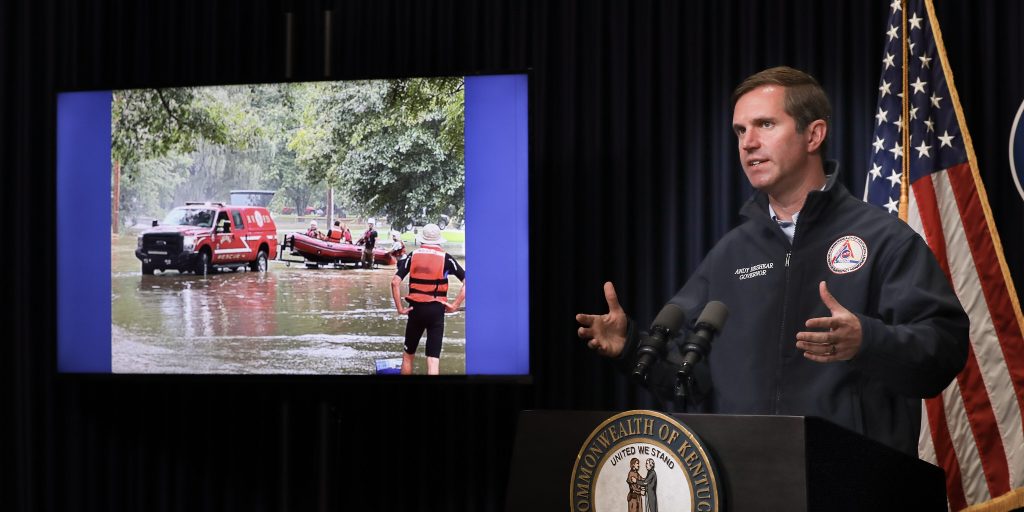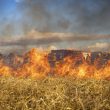Death toll continues to rise in Kentucky as more severe weather sweeps through the region
Appalachia is underwater—at least 30 people have died in historic flooding that’s brought Kentucky to its knees for the second time in two years, following the devastating tornado that cut across the state in December. Severe weather is continuing to hit the region even as the death toll rises.
“If things weren’t hard enough on the people of this region, they’re getting rain right now,” Gov. Beshear said, noting that Floyd, Magoffin, Knott and Pike counties remained under a flash flood warning Monday morning. “There is severe storm potential today in all of the impacted areas, and that is just not right. The most risk is on the northernmost point of the impacted areas, but it is very unstable.”
Upon declaring a state of emergency Thursday, Beshear called the disaster “one of the worst, most devastating flooding events in Kentucky’s history. The situation is dynamic and ongoing. In most places we are not seeing receding water—in fact, in most places it has not crested yet.”
Officials are bracing for the death toll to rise as the water recedes.
“From everything we’ve seen, we may be updating the count of how many we’ve lost for weeks,” Beshear said.
On Friday, Pres. Joe Biden ordered federal aid to help first responders—including National Guard members from Kentucky and a few neighboring states—with recovery efforts. Besides a few cities including Jackson, the 13 counties so far covered by the declaration are Brethitt, Clay, Floyd, Johnson, Knott, Leslie, Letcher, McLean, Martin, Owsley, Perry, Pike and Wolfe.
FEMA Administrator Deanne Criswell arrived in the state Friday and surveyed the damage with Beshear.
“We saw many homes that are still inundated, where the water has not receded, and we saw many homes that are going to have access issues, because the roads are out, the bridges are out,” Criswell said, noting they saw a few other helicopters actively rescuing people.
So far, 10 shelters have been set up, two from the Red Cross, six independent and two state parks. While it’s unknown how many people are unaccounted for, 24,000 customers are without power and at least 337 have sought assistance at one of the emergency shelters. Evacuations are underway across the eastern end of the state, led by the Kentucky National Guard with help from neighboring state militias, the state police and environmental police, among many other agencies.
Jackson, which is below a dam officials fear will soon be breached, has also been evacuated.
“Late last night, early this morning, we thought a breach was imminent—we hope that is not the case,” Beshear said at an earlier update briefing Friday, noting first responders “have gone door-to-door evacuating people.”
For now, with cell reception limited and the water still rising, rescuers are focused on saving lives. But with a clear weekend projected in the forecast, Beshear said emergency managers are hoping they’ll be able to evacuate people who are cut off from aid by water, and provide necessities to others they don’t currently have access to ahead of more rain expected to start next week.
“Folks, right now, it looks like it’s going to rain a lot Monday, maybe Tuesday,” Beshear said. “As we sit here today, portions of at least 28 state roads in Kentucky are blocked due to flooding, slides or damage. We have bridge inspectors and engineers in the field, but we are unable to get to some of these roadways it is so bad.”
The Kentucky State Police has asked those seeking information on a missing person not to call 911, and to instead call one of the numbers included on this list.




















